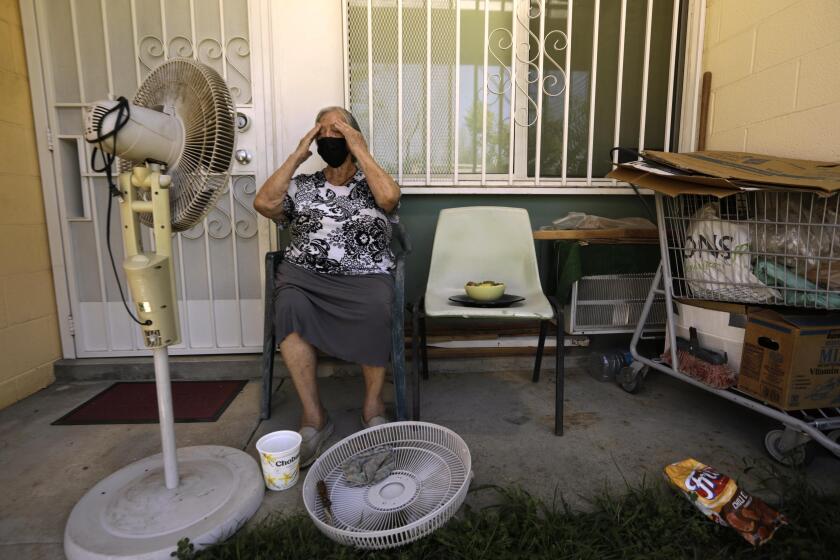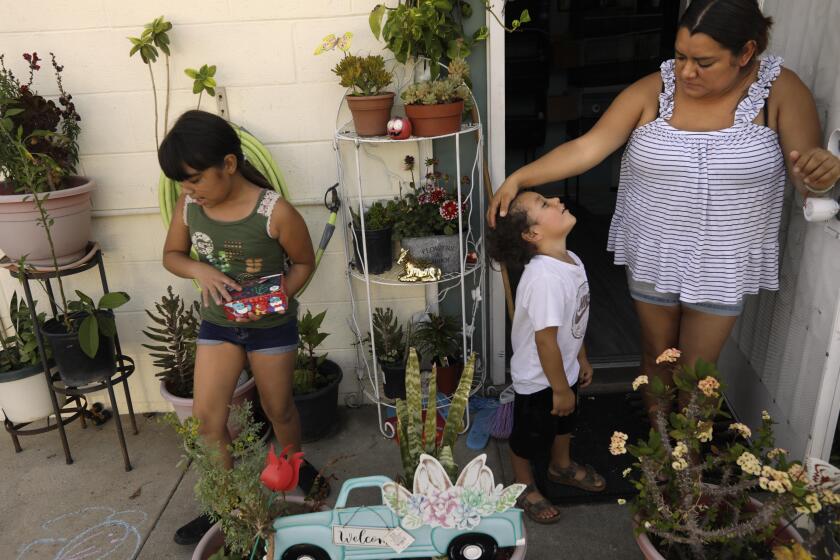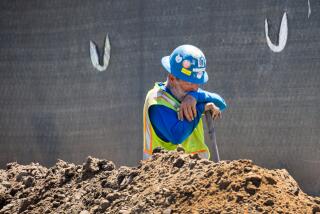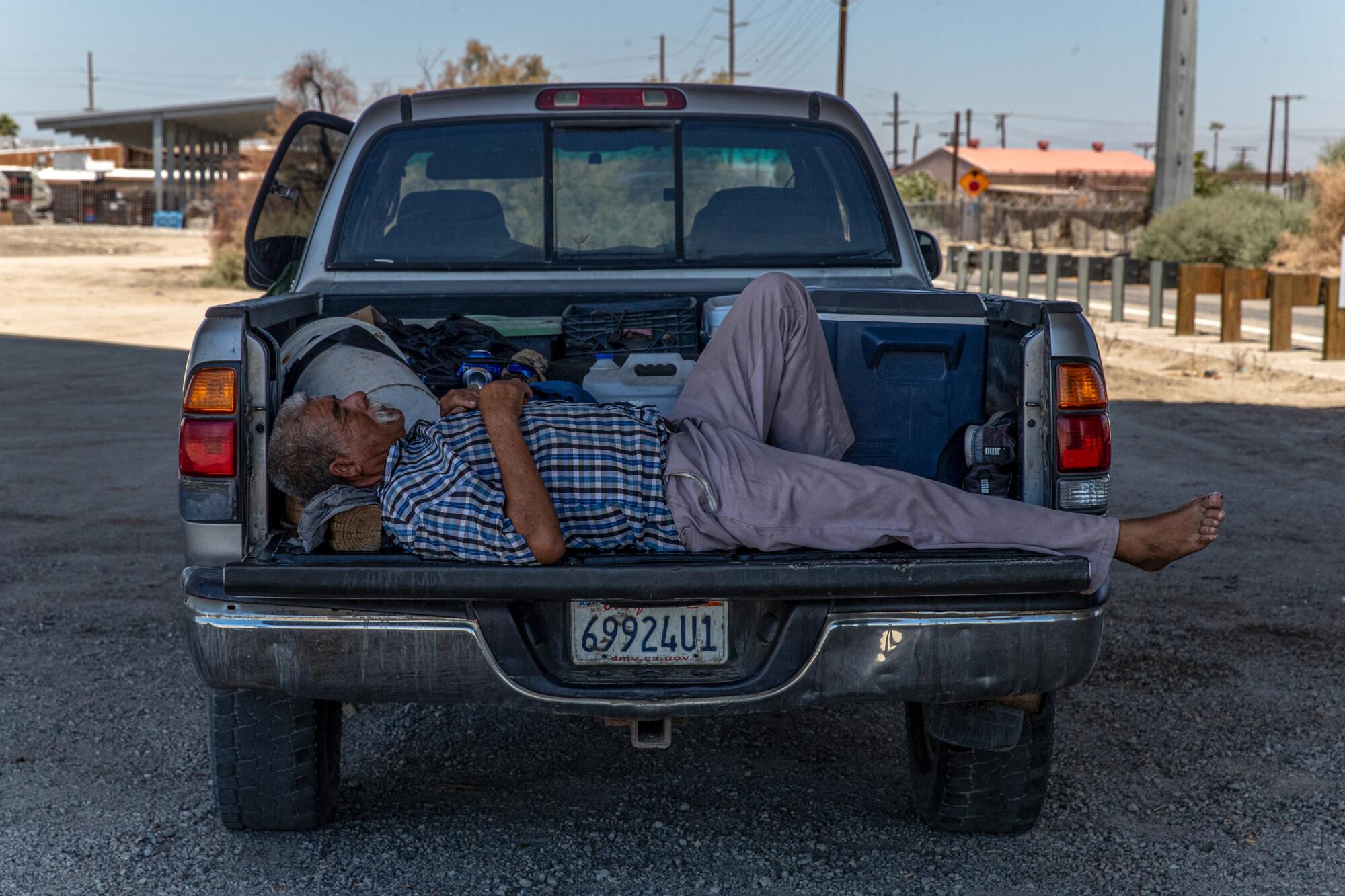
After spending the morning picking grapes in the Coachella Valley, farmworker Juan Flores and his friends parked their trucks under the shade of a bridge near the fields and did their best to settle in for the afternoon as the heat approached 100 degrees.
They came to Mecca to work the harvest but couldn’t find an apartment to rent and had no family nearby to stay with. So as a suffocating heat wave blanketed the state, the trucks were their homes and the shade beneath the bridge their principal relief.
“La necesidad hace a uno sufrir,” Flores said. Need makes you suffer.
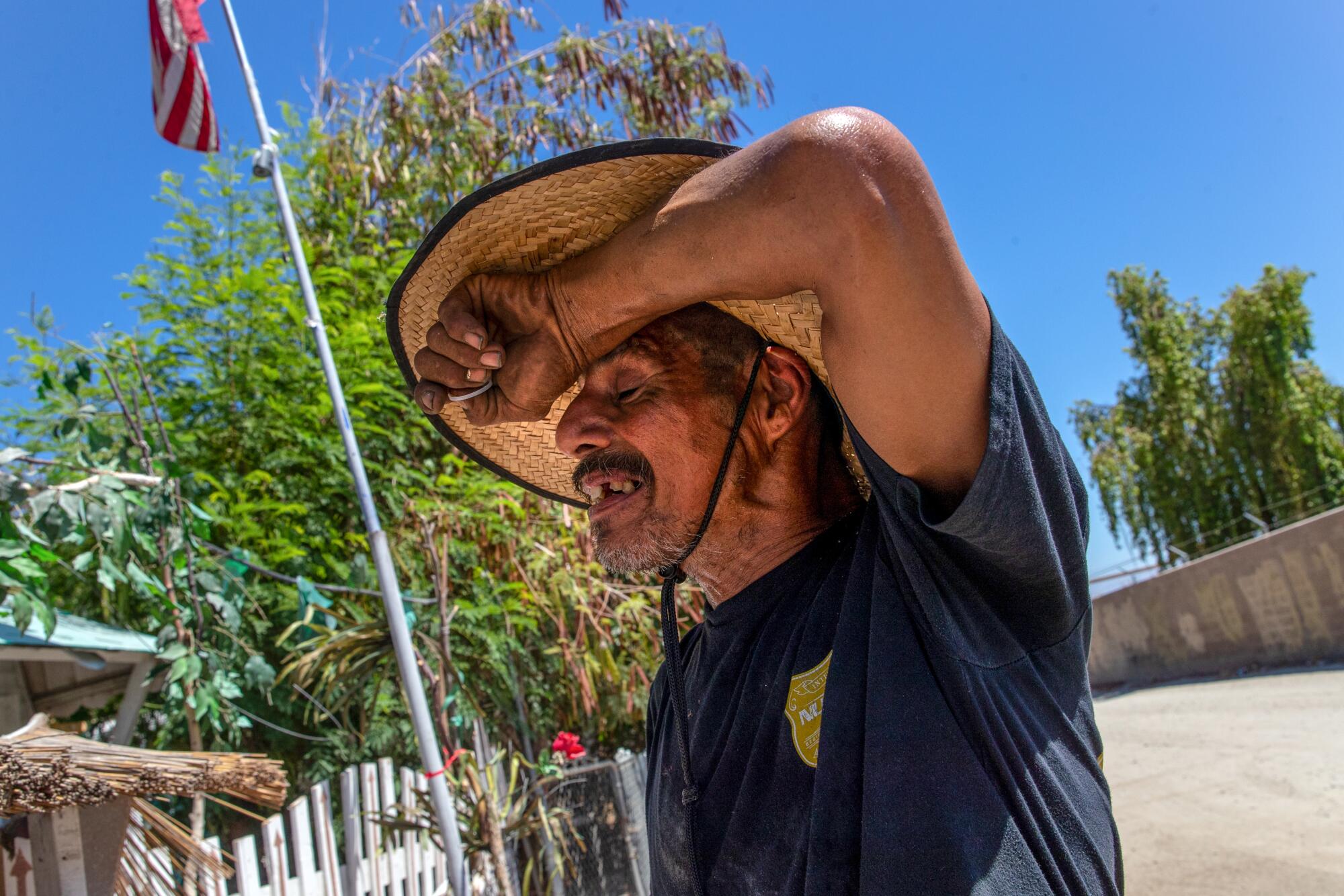
With several days of intense high temperatures expected across much of the state, experts and officials warned residents to protect themselves by staying cool and hydrated against the dangers of extreme heat, including dehydration, heat exhaustion and heatstroke.
But for some of California’s most vulnerable residents, those without homes or air conditioning or those who have no choice but to work outdoors, finding relief is not always possible.
The prolonged heat wave across the Southwest sent temperatures rising across Southern California, with some of the highest temperatures expected in the valleys — and above-normal heat expected into next week.
Parts of the Antelope Valley will probably reach 110 degrees and could possibly go as high as 115 degrees, said meteorologist Mike Wofford of the National Weather Service. In the Coachella and Imperial valleys, temperatures could reach 121 degrees over the weekend, with little cloud cover and little wind, NWS meteorologist Elizabeth Adams said. At night, she added, temperatures were expected to fall to only between 84 to 90 degrees.
“That’s going to hardly offer any relief,” Adams said.
Experts say they are especially concerned when heat waves are prolonged and people don’t get the chance to recover from high temperatures.
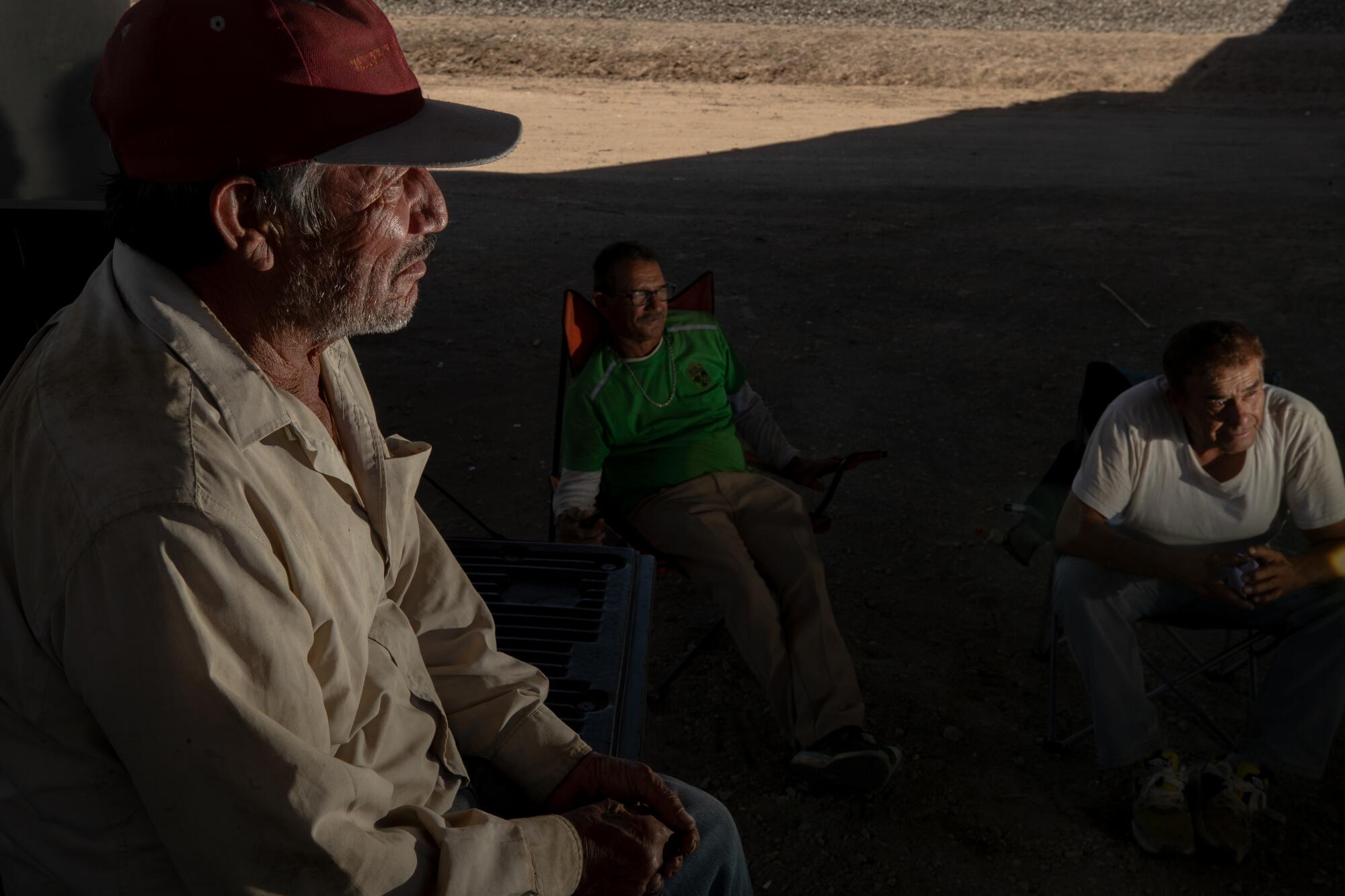
In 2021, an L.A. Times investigation found that heat probably caused nearly 4,000 deaths across the state over the previous decade, while noting that the dangers fall disproportionately on the elderly, the unhoused and low-wage workers, particularly those in construction, landscaping and agriculture and who work in warehouses without air conditioning. Poor communities, with less shade, are also bearing the brunt as cities warm up due to climate change.
“Your body might be able to ride the storm for a day,” said Edith de Guzman, co-founder of the Los Angeles Urban Cooling Collaborative. “The trouble is when you end up having multiple days, three-, four-, five-day heat waves and you don’t have much relief at night.”
For the body, she said, it can be “too much to bear.”
Paved surfaces, tree cover, and home construction quality can make the difference between heat waves being an inconvenience or a threat to your life.
Sweat glistened on Steven Rodriguez’s face as he picked okra in the Coachella Valley.
The 21-year-old was on summer break from college but spent the mornings helping his dad gather as much produce to sell before it spoiled in the sun.
“The heat actually started later [today], but then it all came at once,” Rodriguez said. “It was 90 and then 100-plus. You can feel it right away.”
He wore a bandanna around his head to keep the sweat from dripping into his eyes. A neck gaiter protected his face from bugs. A straw hat on top of a baseball cap shielded him from the sun. Still, “there’s not much we can do,” he said. “It gets warmer faster and earlier. There’s not enough wind and the heat is dry.”
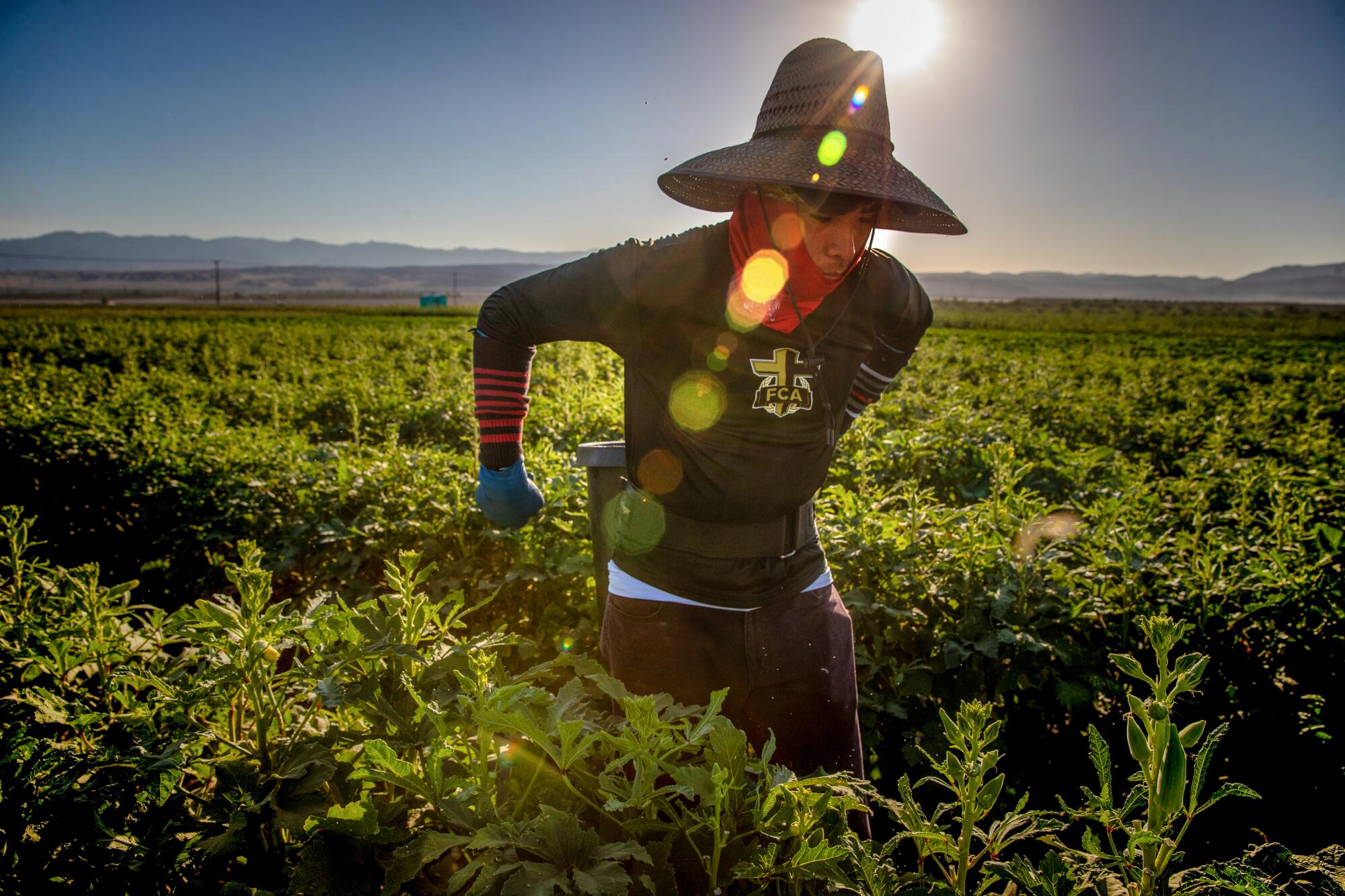
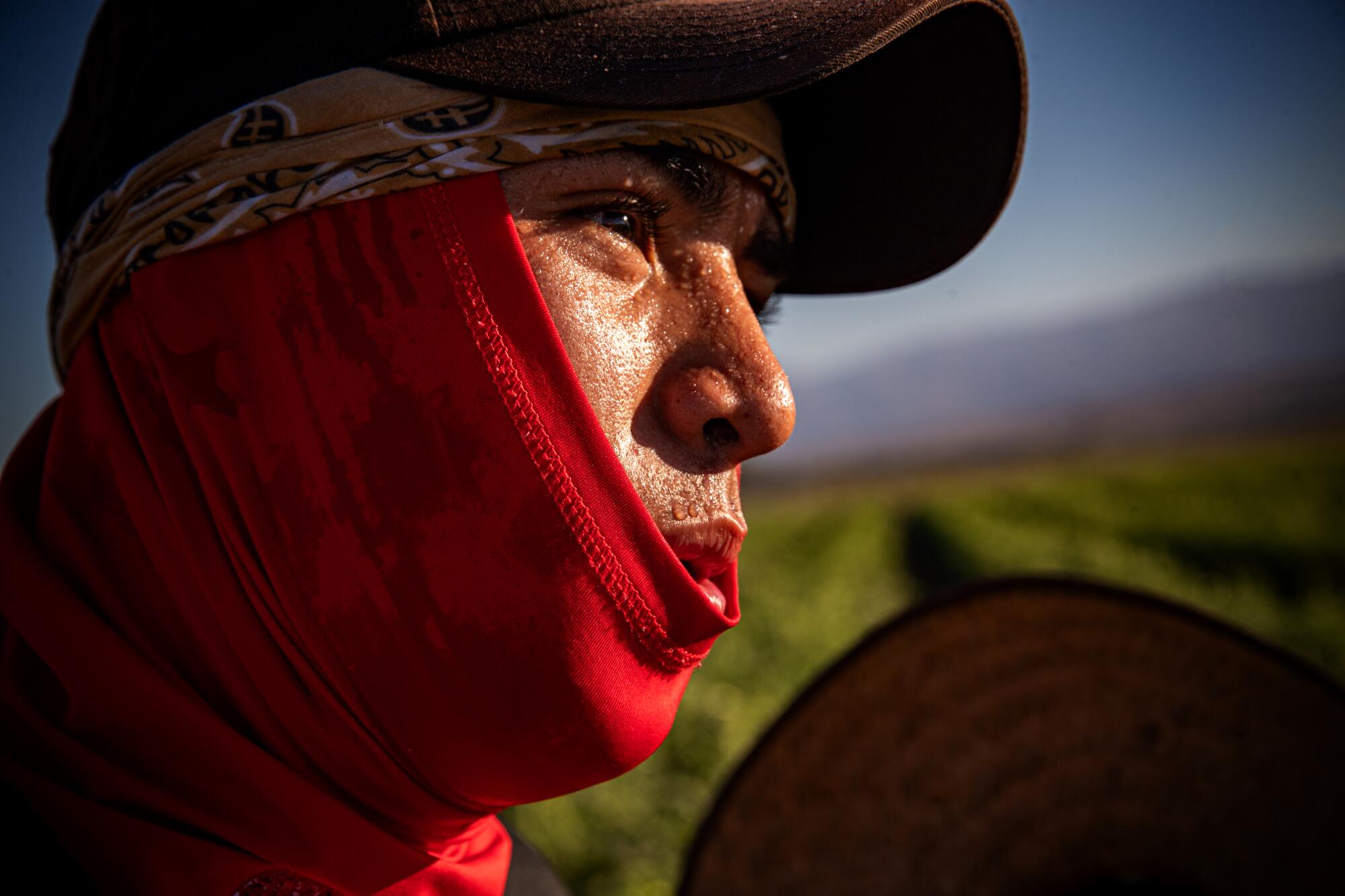
If he stayed at home, the college student said, he would probably stay indoors until the sun set unless he had a pressing matter to attend to. It’s how most people in the area get by, he explained.
The family installed air conditioning in their mobile home and it provides some relief. But it also puts a dent in their paycheck. In the summer season, his dad, Jose Rodriguez, pays about $150 to $200 more in electricity bills.
The father said he is hoping to make it through this season with some profit. He leases the land where he plants okra and barely has enough to pay his two workers and his son. There are times when he withdraws money from his savings to buy fertilizer.
But, he added, “I don’t think we can live without A/C.”
At St. Anthony Trailer Park in Mecca, Martha Hernandez tended to some errands while her three grandchildren watched cartoons in their air-conditioned mobile home. Steps away from her home, there was an empty playground.
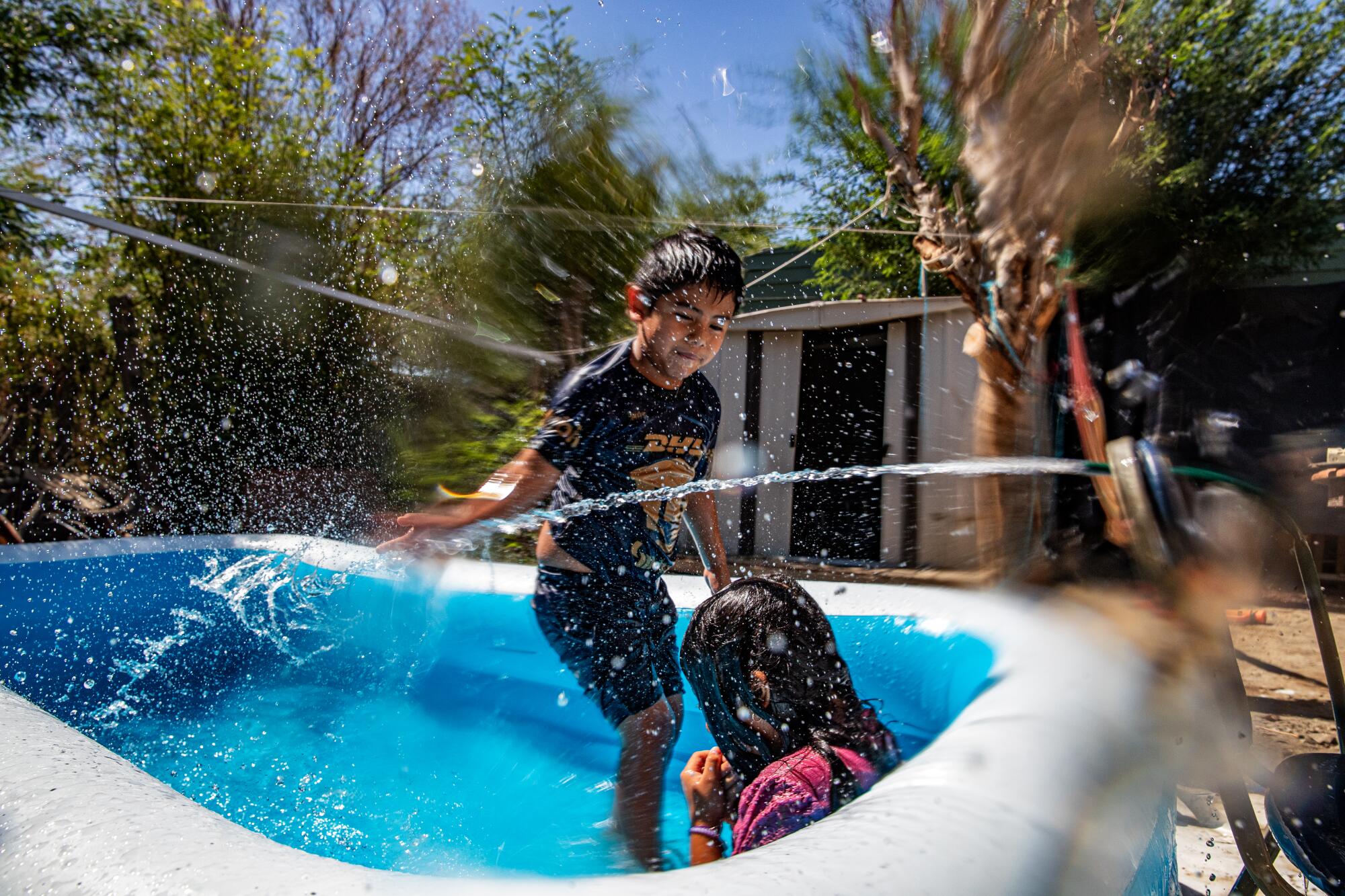
Her grandchildren often beg to play outside, but Hernandez doesn’t allow it during the day in summer. She puts on movies or reminds them of all their toys to keep them occupied until dusk, just as most of her neighbors do.
“We have to take care of them,” the 62-year-old said.
Jeremy Johnson, executive director of Grace Resources, a Lancaster nonprofit that provides food and showers for people who do not have homes, said he worries about the lives of the people he works with when heat waves come.
What are heat-related illnesses and how are they treated? Are they preventable or inevitable? We talked to health experts for the answers.
Last year, two people who were regulars at Grace died of heat-related ailments, Johnson said.
“When I see or hear the long-range weather forecast, it makes me think that we are going to lose some of our clients,” he said. “It breaks our heart knowing that people are trying to survive living in the desert when it’s 110 degrees.”
Johnson’s group gives out about 1,000 bottles of water a week to help people stay hydrated.
“Water is such a precious resource here,” he said.
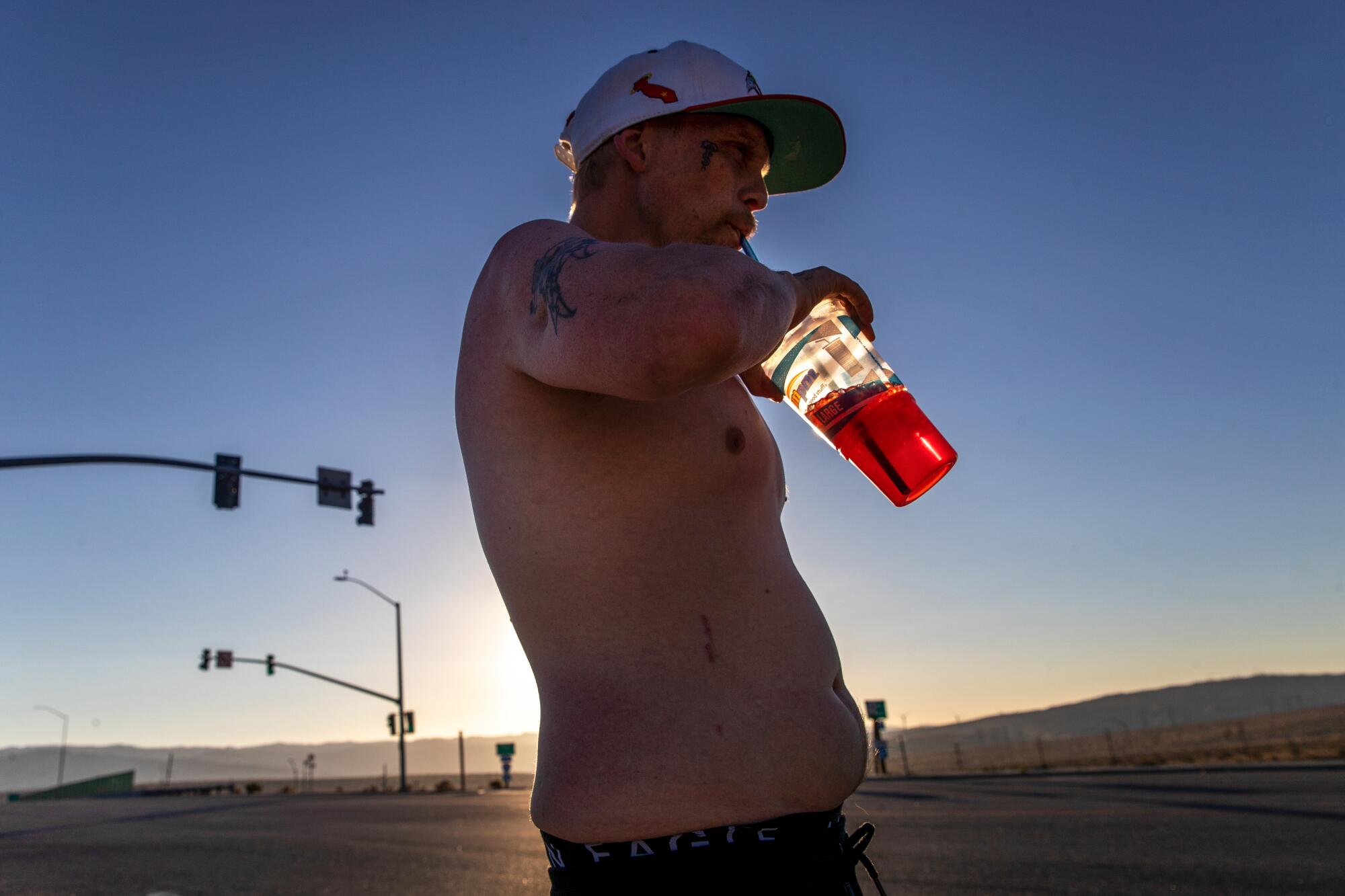
At a Lancaster park, Anthony James sat in a wheelchair under the shade of a gazebo. One man slept on the concrete floor; others rested in fold-out chairs.
A former security guard, James, 56, lost work after developing blood clots. He has been on the streets since his brother, whom he lived with, died seven years ago.
The gazebo is one of the few public places where people like him can gather in the heat. But they aren’t always welcomed — city workers often ticket those with tents for loitering.
James packs light with a small backpack and water. At night, as he worries about staying cool, he’s also nervous about being robbed or hassled.
“We are battling the heat, plus if people are going to come through,” he said. “If you don’t figure it out, you go to the dogs.”
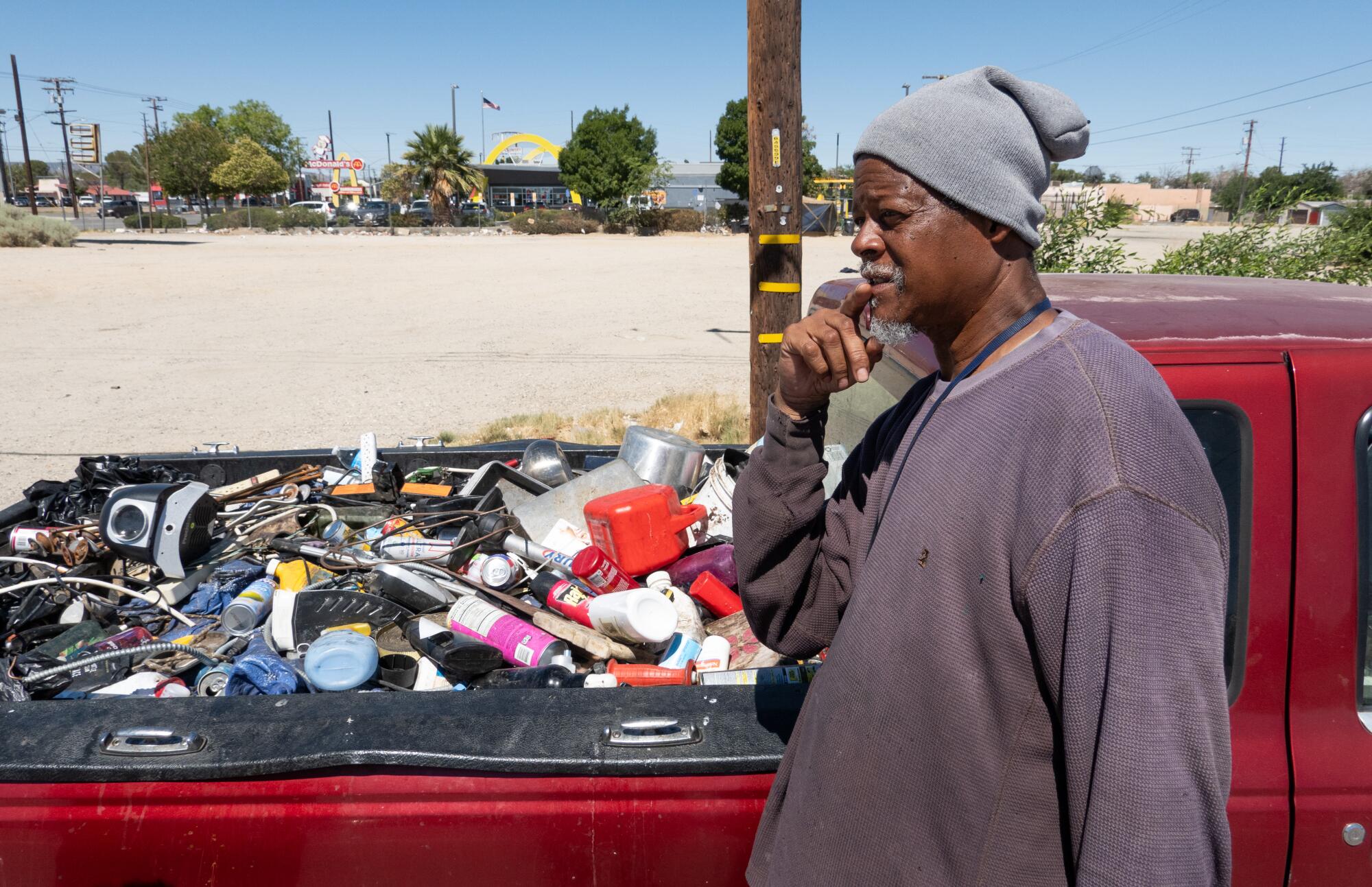
A local advocacy group regularly brings by food and water, but James said there aren’t many resources out there for him and others.
“I have a wet rag and put it over my head,” he said. “I use my EBT card to buy ice and drinks and thank the Lord for this gazebo.”
James Fields, 62, lives in a beat-up Ford pickup without air conditioning in Lancaster. He wears a knit beanie and long-sleeve shirt to keep the sun from burning his skin. He scavenges trash cans for recyclables during the day and stops when the heat is too much, resting and sometimes sleeping under an oak tree.
“You have to plan ahead. You have to stay cool,” he said.
Fields, who has lived on and off the streets in Lancaster for two decades, said the scorching heat is a fact of life.
“This is an extreme place,” he said. “If you are not ready for it, it will take you for a loop.”
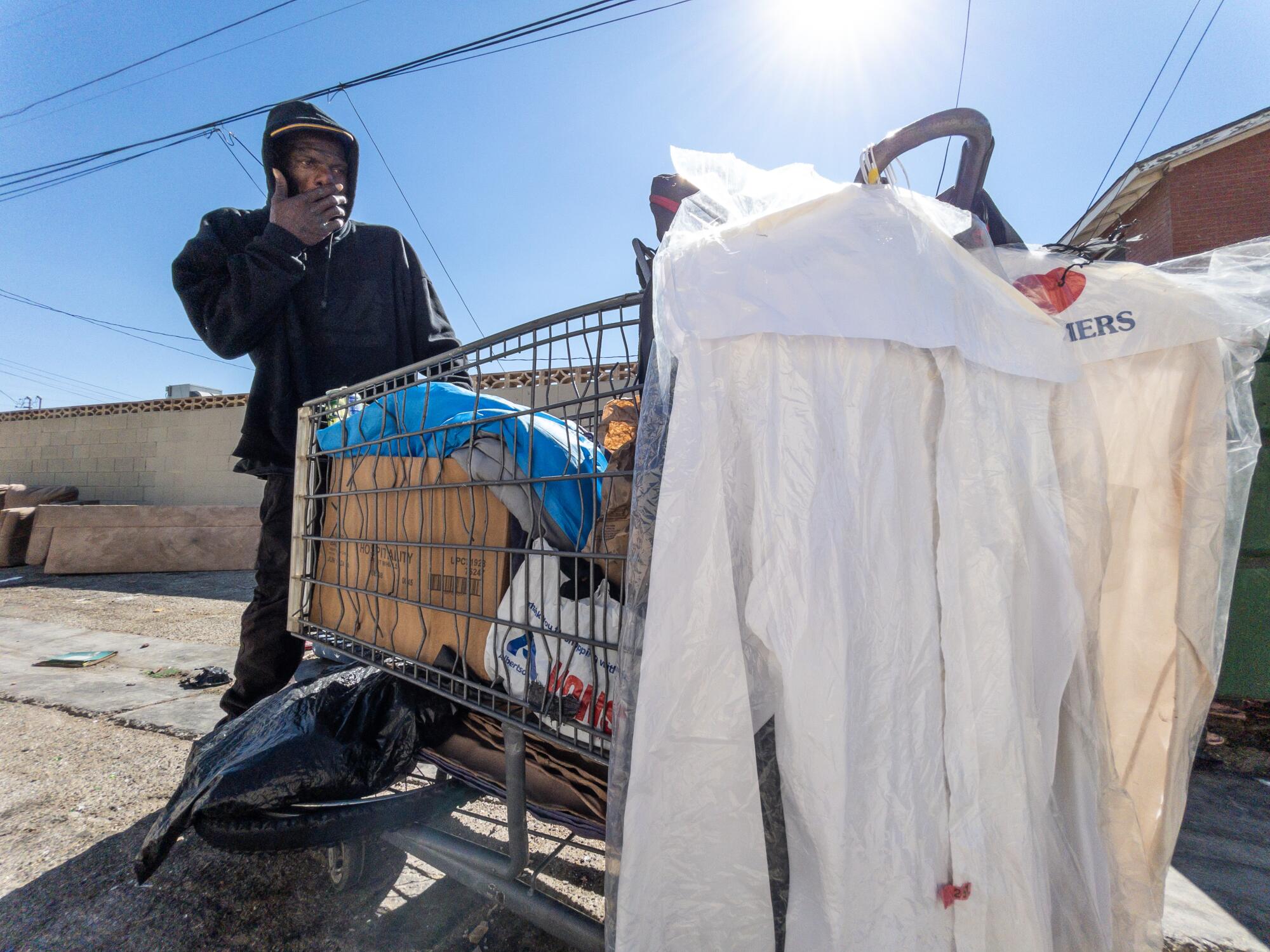
One summer, years back, he said goodnight to a friend at an encampment. When he returned in the morning, his friend, a man in his 40s, was dead.
As the temperatures soared past 100 this week, Fields pointed at a near treeless dirt lot where at least half a dozen people lived under slivers of shade. One man sat in the narrow shadow of a telephone pole, his belongings scattered out in front of him.
“What you are looking at is what people do to survive,” he said.
More to Read
Sign up for Essential California
The most important California stories and recommendations in your inbox every morning.
You may occasionally receive promotional content from the Los Angeles Times.
